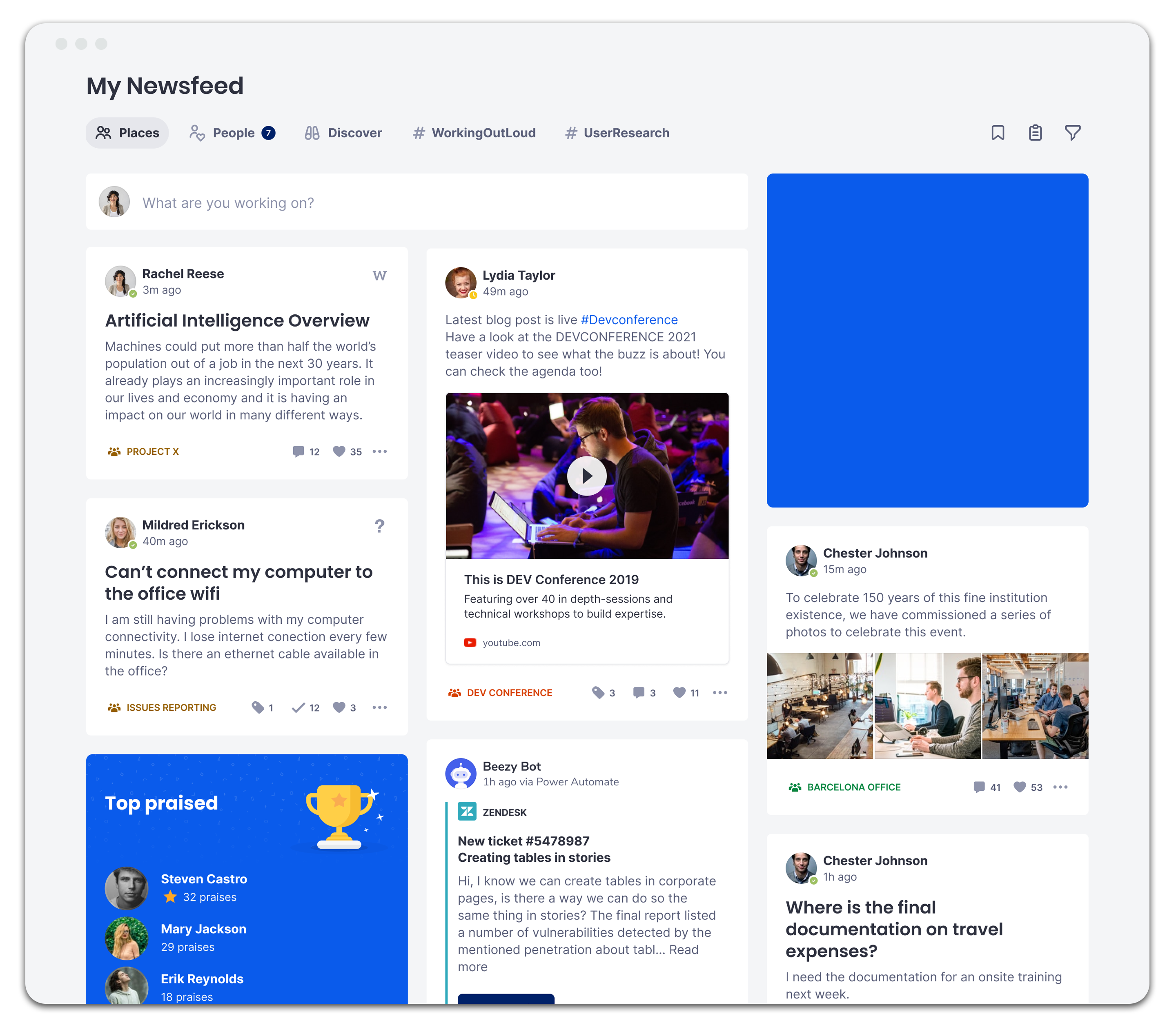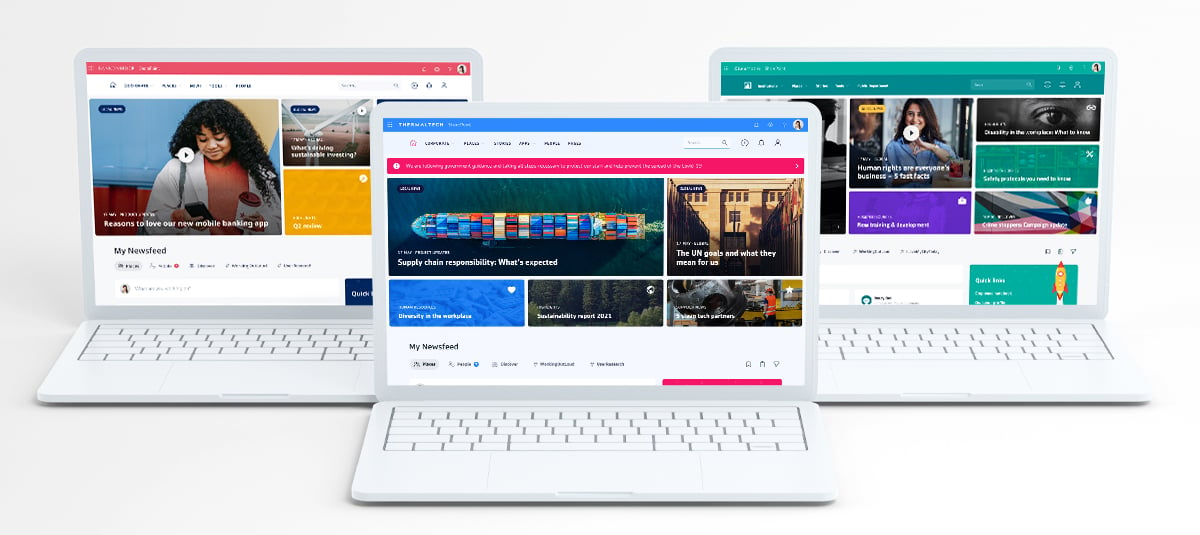


If your company has hundreds of thousands of employees, how can you ensure you foster the right organizational culture and identity? And why should you care?
Well, you should care because organizational culture and identity matter more than ever in today’s competitive landscape. As to how large organizations can get it right – and rally their teams around a shared vision – the answer is the right intranet software. It's not a subject that excites everybody, so I’ll try to make it as relatable as possible.
Here goes.
When I was at university, I wrote my dissertation on identity and belonging in football (as in, soccer).
I grappled with this question:
“Does following a lower league football team give fans the same sense of identity and belonging as those who follow a Premier League club?”
If you’re a football fan (or a Ted Lasso fan, or any other sports fan for that matter), you’re probably thinking, “Yes, of course it does, if not more so!”
Most of us have a few other roles that shape how we see ourselves – parent, husband, wife, musician, scuba diver, and so on. But perhaps most important of all, even more important than our football team, is our job.
Think about it: We rarely introduce ourselves without someone asking what we do for a living. That’s one of the reasons why prioritizing employee experience, identity, and belonging is so important when it comes to brand-building and creating a strong organizational culture.
Because our jobs are such a defining detail of who we are, companies go to great lengths to shape their public perception and internal culture to not only attract new talent but keep existing talent satisfied.
According to McKinsey, leading organizations convey their identity by embracing three things:
The need for a distinct identity and better employee experience comes down to a number of factors, such as the ongoing war for talent and the rising numbers of millennials – who are looking for meaning, flexibility and connection in their jobs – in senior roles. What organizations require is, as McKinsey puts it, “a human-centric approach to grasp an employee’s needs and desires, to create those moments that truly matter in their day, year, and career.”
At Beezy, we've spent many years helping our customers – including the biggest, most distributed companies – build a strong organizational culture. We started by making sure that everything employees saw in their Beezy Newsfeed was relevant and personal to them. This put the power in the hands of users, allowing them to follow communities that would be genuinely useful or interesting. It was a good start, but we knew we needed to do more if we really wanted to address the challenges large organizations face.
We later added some elegant solutions around languages to make sure users would see content in their native language before any other results. Again, good. But not enough.
By listening and working with customers we introduced the idea of ‘audiences.’ This feature allowed us to take editorialized pieces of content – such as internal news, policies, and procedures – and target them to users via any specific metric the company wanted (as long as it was captured in Azure AD, SharePoint, or their HR system).
Now we were making real progress. Our customers could finally start to target content to their users, and suddenly news seemed better to users (when really it was just the same news, only better targeted).
For HR the difference was immediate. Crucially, users would only find their policies. This not only solved a “findability issue” but also removed several headaches for HR. You try explaining to a soon-to-be mother or father in North America that the parental leave policy they just found is actually Sweden’s, and not the USA’s.
For many customers, this solves most (if not all) organizational culture and identity issues.
But what about multinational or conglomerate organizations with multiple sub-companies or departments?

Back to football for a minute. When I was working on my dissertation all those years ago, I found that the sense of identity and belonging that Tom from Northwich felt on a cold Wednesday evening watching his team play Woking with 17 other fans was clear: There’s both strength and comfort in 18 like-minded people enjoying a pie and a pint, cheering on their local team.
Ted Lasso gets that. He’s so focused on culture that he barely notices the impact of his team’s relegation.
But how do Liverpool Football Club, or FC Barcelona, for example, get their ideals, identities, and sense of belonging across to fans in more than 100 different countries, time zones, and languages?
Large global organizations face a similar issue. After working closely with a number of these large companies (our customers), we introduced a new type of administrative capability to Beezy. What this achieved, by proxy, was to improve the employee experience tenfold. By allowing a global admin to create “local entities” (with their own admins), we could effectively enable pockets of local culture and identity, with no negative impact on wider company ideals.
Now, I’ve watched Liverpool games with supporters’ clubs around the world – in Brazil, Australia, the USA and, of course, Liverpool. And I can tell you that they’re all very different experiences, each with their own rituals, beverages, scarves, and food. But the overriding theme is a real love of the club.
The same balance applies with our global-local feature. By allowing local entities differing levels of control and flexibility, local offices and subsidiaries foster their own ideals, language, navigation, news, policies, and (in some cases) even branding. But always in the context of the bigger picture – and never to the detriment of the corporation’s overarching ideals and identity.
In simple terms, it’s like having many mini-intranets (entities) but with ubiquitous content and information that can float between them all when needed.
It’s installed in one single Microsoft 365 tenant with the ability to search, share, and generally benefit from everything that comes with working for a large organization. All without losing the all-important sense of identity, culture, and belonging you have when you’re having a chat by the water cooler, or a pie and a pint in the away stand.
To find out more about how Beezy can help rally your team around shared goals and unite your global organization, book a demo today.

These Stories on employee experience

No Comments Yet
Let us know what you think